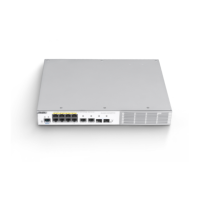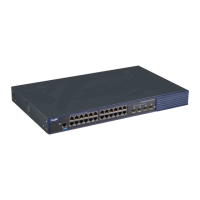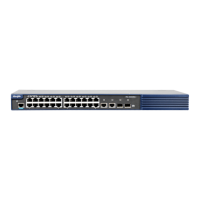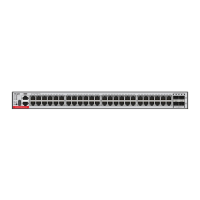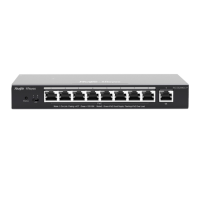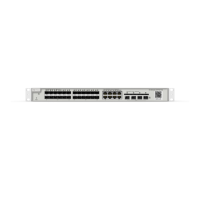Configuration Guide SNMP Configuration
The keywords ―0‖ and ―7‖ indicate encryption type of community string. If the
keyword ―0‖ is used before the community string, it indicates the input
community name is plaintext. If the keyword ―7‖ is used, it indicates the input
community name is ciphertext. If the option is not specified, ciphertext is used
for community name by default. After configuring the service
password-encryption command, the community string is displayed and
recorded in cipher. If you then configure no service password-encryption, the
community string is still displayed and recorded in cipher but not plaintext.
Configuring SNMP Protocol Port
By default, the SNMP protocol uses 161 UDP port to receive SNMP messages;
Because of security concerns, users can define which UDP port is used.
To configure the SNMP protocol port number, run the following command in
global configuration mode.
Ruijie(config)# snmp-server udp-port
port-num
Specify a UDP port for SNMP to receive
messages.
Use the no snmp-server udp-port command to restore the default port.
Configuring MIB Views and Groups
With view-based access control model, you can determine whether the object of
a management operation is in a view or not. For access control, generally some
users are associated with a group and then the group is associated with a view.
The users in a group have the same access right.
Set an inclusion view and an exclusion view.
Set a Read-only view and a Read-write view for a group.
Set security levels, whether to authenticate, and whether to encrypt for
SNMPv3 users.
To configure the MIB views and groups, run the following commands in the
global configuration mode:
Ruijie(config)# snmp-server view
view-name oid-tree {include | exclude}
Create a MIB view to include or exclude
associated MIB objects.
Ruijie(config)# snmp-server group
groupname {v1 | v2c |v3 {auth | noauth |
priv}} [read readview] [write writeview]
Create a group and associate it with the
view.
You can delete a view by using the no snmp-server view view-name
command, or delete a tree from the view by using the no snmp-server view

